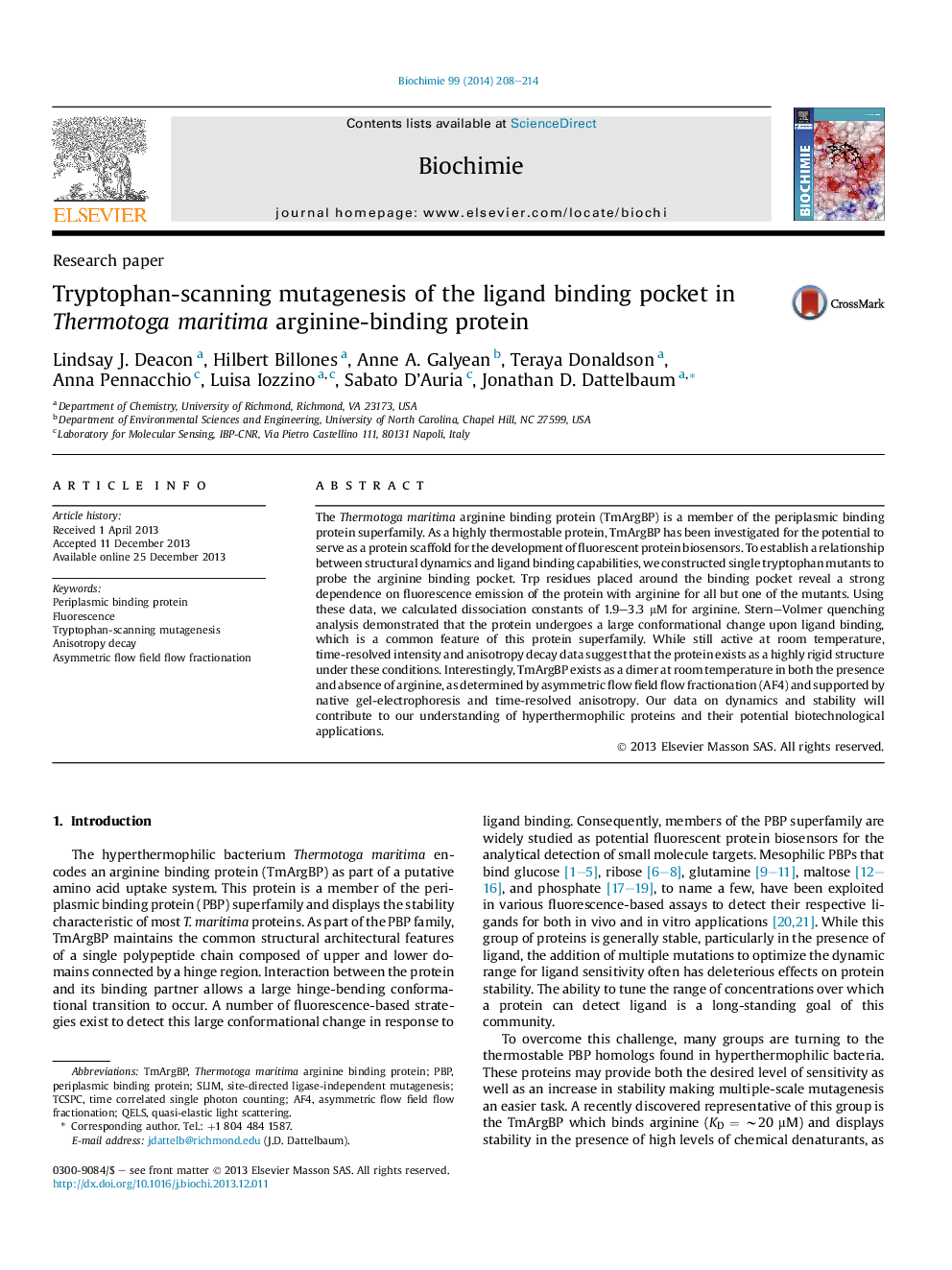| Article ID | Journal | Published Year | Pages | File Type |
|---|---|---|---|---|
| 8305703 | Biochimie | 2014 | 7 Pages |
Abstract
The Thermotoga maritima arginine binding protein (TmArgBP) is a member of the periplasmic binding protein superfamily. As a highly thermostable protein, TmArgBP has been investigated for the potential to serve as a protein scaffold for the development of fluorescent protein biosensors. To establish a relationship between structural dynamics and ligand binding capabilities, we constructed single tryptophan mutants to probe the arginine binding pocket. Trp residues placed around the binding pocket reveal a strong dependence on fluorescence emission of the protein with arginine for all but one of the mutants. Using these data, we calculated dissociation constants of 1.9-3.3 μM for arginine. Stern-Volmer quenching analysis demonstrated that the protein undergoes a large conformational change upon ligand binding, which is a common feature of this protein superfamily. While still active at room temperature, time-resolved intensity and anisotropy decay data suggest that the protein exists as a highly rigid structure under these conditions. Interestingly, TmArgBP exists as a dimer at room temperature in both the presence and absence of arginine, as determined by asymmetric flow field flow fractionation (AF4) and supported by native gel-electrophoresis and time-resolved anisotropy. Our data on dynamics and stability will contribute to our understanding of hyperthermophilic proteins and their potential biotechnological applications.
Keywords
Related Topics
Life Sciences
Biochemistry, Genetics and Molecular Biology
Biochemistry
Authors
Lindsay J. Deacon, Hilbert Billones, Anne A. Galyean, Teraya Donaldson, Anna Pennacchio, Luisa Iozzino, Sabato D'Auria, Jonathan D. Dattelbaum,
